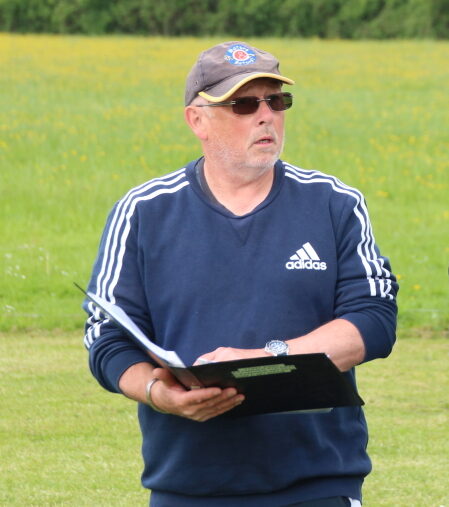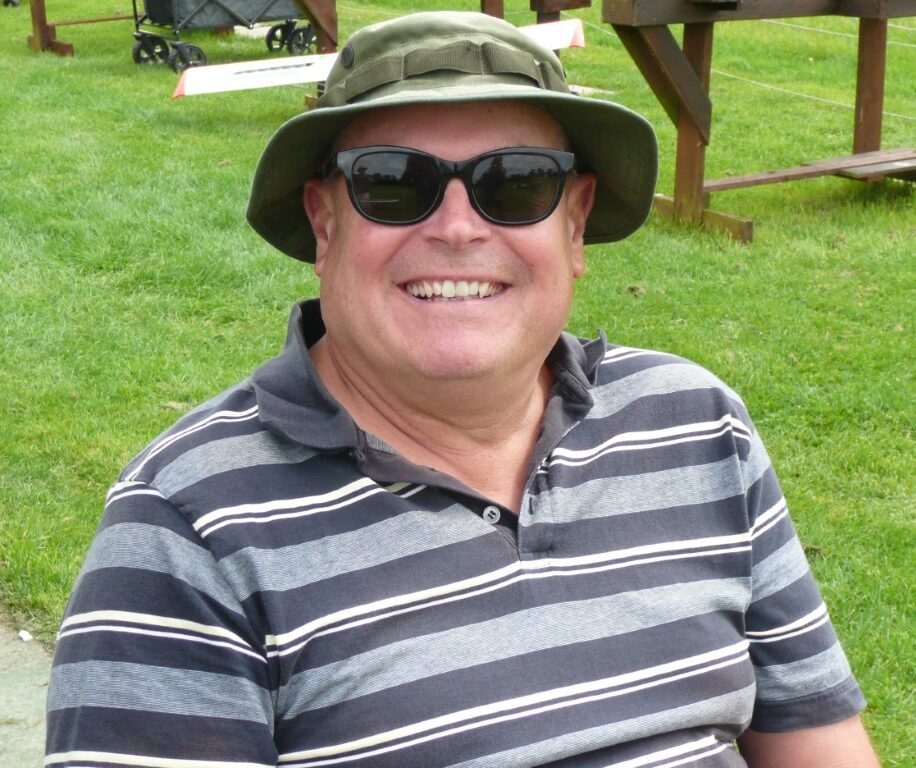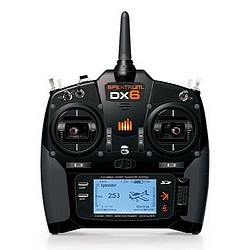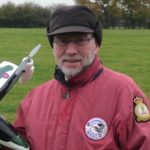For the newcomer to the hobby, a properly organised training scheme is of the utmost importance. The system that we currently operate trains members to the BMFA ‘A’ certificate standard, enabling them to fly solo. And it is FREE!
The scheme revolves around a core of volunteer instructors, who give instruction both mid-week and at weekends throughout the season (weather permitting). Our preferred method of initial training is via a ‘buddy box’: a system that links two transmitters together and allows the instructor to pass control to the pupil by simply holding down a spring-loaded switch. If the pupil gets into difficulties, the instructor can instantly regain control of the model. This system allows the pupil, having made an error, to try and correct it themselves – and hence learn proper control.
Our preferred method of initial training is via a ‘buddy box’: a system that links two transmitters together and allows the instructor to pass control to the pupil by simply holding down a spring-loaded switch. If the pupil gets into difficulties, the instructor can instantly regain control of the model. This system allows the pupil, having made an error, to try and correct it themselves – and hence learn proper control.
The Club provides five Spektrum transmitters with the facility for wireless connection to buddy box to another Spektrum transmitter (plus leads for those without wireless capability), but there is no ‘standard’ system and each manufacturer has a different approach. If you choose another brand of transmitter it is recommended that you invest in a second of the same make/model to use as a buddy box.
HOWEVER, BEFORE YOU INVEST IN ANY RADIO CONTROL EQUIPMENT (OR INDEED MODEL) WE STRONGLY ADVISE YOU TO VISIT THE CLUB AND ASK FOR ADVICE: IT COULD SAVE YOU A LOT OF MONEY AND GRIEF!
Paul Appleyard, one of our Club’s instructors, offers the following advice: “All the radio manufacturers have their own way of doing things, so to achieve the master/slave setup necessary for instructing a pair is needed. The Club has three Spektrum transmitters which will work with another Spektrum transmitter wirelessly.
This wireless trainer link is definitely recommended. Spektrum is a popular brand and many club members using them, including myself so there is plenty of help available to novices
A good 6 channel transmitter to start with is the Spektrum DX6e (SPMR6650EU) at around £180-190 without receiver. The transmitter should be Mode 2, throttle on the left stick.
There is a huge amount of information available about these systems on the Logic RC website: https://www.logicrc.com/default.aspx?s=c:0,c:50
If you choose to buy a used Spektrum transmitter, then ensure the transmitter is DSMX compatible. This is the protocol, or language, that it uses to talk to the receiver. In addition be aware that there have been many different variations of the DX6 and not all have the wireless buddy box feature”
It is worth noting that Al’s Hobbies of Wolverton are officially approved service agents for Spektrum, able to undertake repairs (but NOT warranty work) and can usually offer a rapid turnaround. They also often have second hand units backed by their warranty.
As for a suitable model for learning to fly, several members are using the electric-powered Riot and Tundra models with good results – see the ‘Reviews’ tab for further details.
We use a Group email system for keeping in contact – so keep an eye on your email inbox to learn which instructor(s) are available each flyable weekend, or post a request for a training session.
Club instructors
 Tony King |
|
 Graham Walker |
|
Flying lessons
The first time you attend a training session, your instructor will:
- Examine your model for airworthiness and inspect the engine/radio installation
- Check the transmitter operation – and the failsafe feature
- Perform a range check
- Connect your transmitter to a buddy box (if applicable – see above) and check the controls
- Explain what he wants you to do when you first take control
- Flight-check the model and adjust the trim before giving you a taste of control
- Land the model
Equipment you need to bring
- Model complete and ready to fly – with the balance point and control movements set as per the instructions
- Fuel and method of filling the fuel tank – or for electric flight, fully charged batteries
- Glow plug igniter for engine powered models
- Spare propeller, rubber bands for wing retention where required and basic tools
- Transmitter (there’s always someone who forgets…)
- Frequency flag for your transmitter (35MHz only)
- Frequency peg (35MHz only) – see section on Frequency Control
- Sunglasses – even in winter
Clearly, all of the above pre-flight checks take time, and there will probably be more people waiting to fly, so please make sure that your model and your flight equipment, are fully prepared – and that your are familiar with it all! Rather than rush through the assembly of the model and go straight to the flying field, take your time, do a proper job, and make sure that you can start your engine!
In fact, it would be better to bring the complete model down to the flying field BEFORE your flight training and seek help from a more experienced member in checking your set-up and (where applicable) starting the engine, running a couple of tanks of fuel through it, setting the needle valve, etc.
You would then also be able to see how the Club works, learn the basic safety aspects – and meet a good crowd of friendly people.
DON’T BE AFRAID TO ASK FOR HELP! We’ve all been Novices, too.





